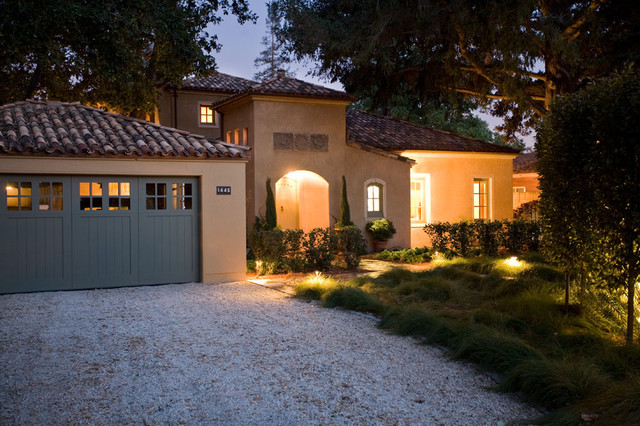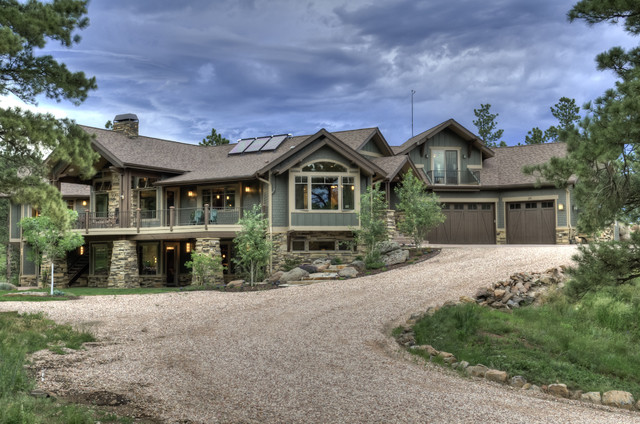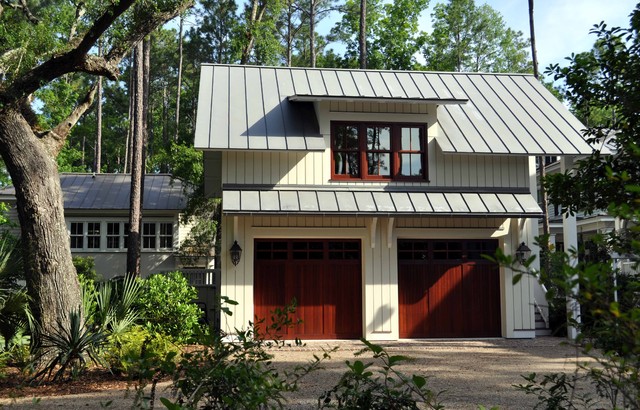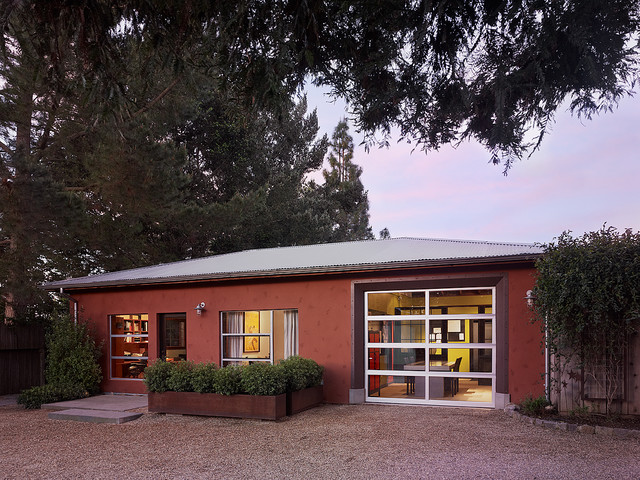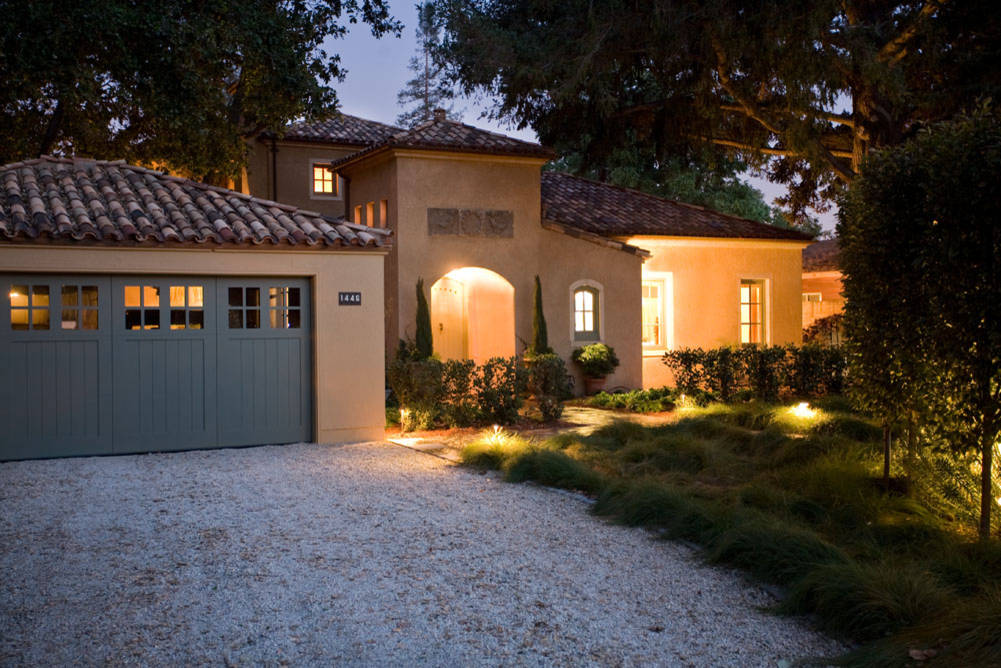
By Erin Lang Norris, Houzz
The driveway is the first thing we encounter when arriving at a house and the last thing we see when we leave. There are several materials to choose from when laying the path for a lasting impression. Today I’ll cover the basics of gravel driveways, plus the advantages and disadvantages.
Gravel Driveway Basics
Cost: $1 to $5 per square foot, though installation costs vary widely depending on where you live and the type of base required
Durability: Lifetime, with proper maintenance
Type of gravel: This depends on your area, but angular shapes are preferred over round.
Maintenance: Weed control and top-dressing (replenishing surface gravel); grading as needed and keeping the rocks out of the yard and garage
Now that you have a quick rundown of what to expect from gravel, let’s talk about the fun part: aesthetics. Given the natural tones of the pebbles that make up a gravel driveway, it is likely to be a good choice next to a warm- or neutral-color exterior.
The long gravel path leading up to this beautiful house enhances the rustic charm of the exterior. Like a good rug, it ties everything together, and the landscape transitions seamlessly to the house.
This gravel driveway meanders along the edge of what feels like a home in the French countryside. While materials such as pavers could give a similar vibe, the gravel fits this landscape quite nicely.
These crimson garage doors are quite striking against a backdrop of soft-tone gravel. They wouldn’t be nearly as radiant if the driveway had been laid in black asphalt.
The laid-back gravel drive makes this modern exterior casually inviting. Concrete might have left it feeling stiff and rigid, and pavers would have been too busy.
By this point, I’m growing a bit envious of all these gorgeous gravel driveways. Let’s cover the advantages and disadvantages of them.
Advantages
1. It’s easy on the budget. Large driveways are much cheaper to outfit in gravel than any other material, though you do have to top-dress every couple of years to keep gravel looking nice.
2. It’s easy to maintain. Adding gravel periodically is quicker than sealing an asphalt driveway and doesn’t require special tools. If you have a trailer to haul it in, along with a couple of hours, a shovel and a rake, you’re good to go.
One thing to consider with gravel is that weeds will creep up through the rocks, so to keep your driveway looking nice, you will have to pull frequently or use a weed killer (sparingly, and not where it can run off into a water supply).
3. It suits many different house styles. It can bring out the natural beauty of a house more than many other materials can.
4. It’s permeable. When gravel is installed properly, rainwater will penetrate directly into the earth, replenishing groundwater.
Disadvantages
1. Snow removal. For those who live in snowy climates, removing snow from a bumpy surface is a hassle, and removing the rocks that get pushed into the yard after shoveling or plowing is an even bigger hassle.
2. Ruts and sinkholes. Gravel will shift over time, forming grooves where water can puddle. Grooves are also a nuisance to drive on, unless you’re into the idea of a driveway complete with your very own speed bumps. Fortunately, these can be leveled out with more gravel.
3. Dust and dirt. Bear in mind that driving over gravel can produce more dust than any other type of material.
Tell us: Do you have a gravel drive? Share the pros and cons with us in the comments below!
Related links:
The Best Gravel and Stone Types for Landscaping
Landscapes That Ramp Up Curb Appeal
Spruce Up Your Entryway


